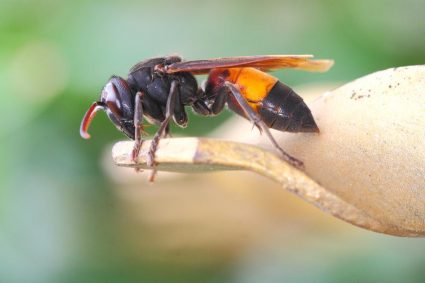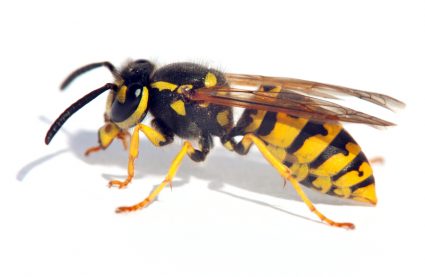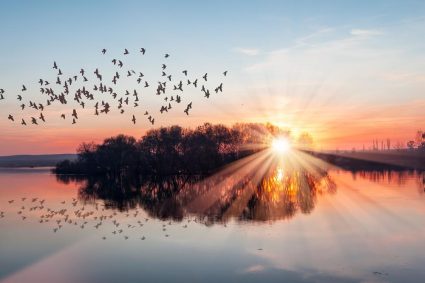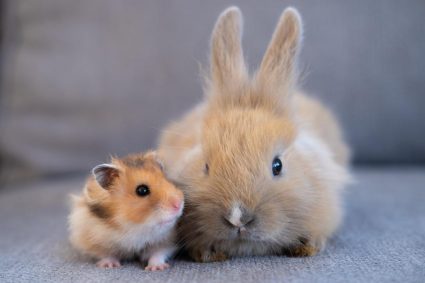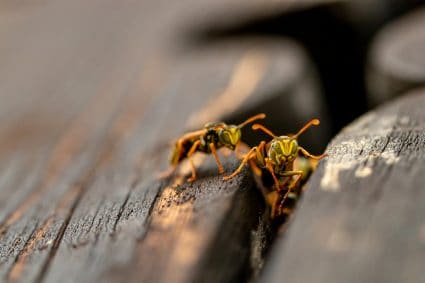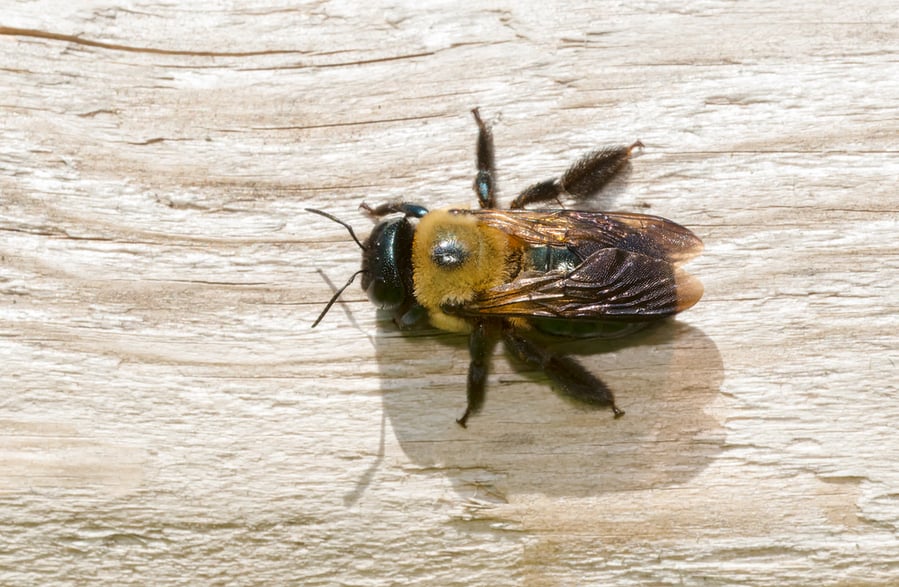
Flowers! Imagine making your garden more welcoming with pretty flowers. What stunning foliage.
Filling up your space with a splash of beautiful hues has an overbearing power to captivate. Flowers are an essential part of nature that adds beauty and acts as an air purifier.
Leave out the functional aspects of these wonders; their beautiful blossoms often lead to the buzzing of bees near your home, and carpenter bees are no option.
Carpenter bees forage on different species of flowers in search of pollen and nectar, which are the primary rewards flowers offer.
Despite their vital role in pollination, carpenter bees are always unwelcomed on a property. These bees burrow into wooden structures around your home, causing damage.
Planting bee-repellent flowers can be a lovely and natural way to keep a healthy lawn and garden. So, what flowers can you have in the garden that keep carpenter bees away?
You can have a carpenter-bee-free garden by planting flowers that:
- Open up at night.
- Produce trumpet-shaped blooms with deep inaccessible tunnels.
- Bloom with a repellent odor.
Also, self-pollinating flowers or flowers that pollinate by the wind act as repellents because they do not develop features that attract carpenter bees.
Breathe in the fragrance and enjoy a carpenter-bee-free garden and splashes of color day or night with these flower ideas:
19 Flowers That Keep Carpenter Bees Away
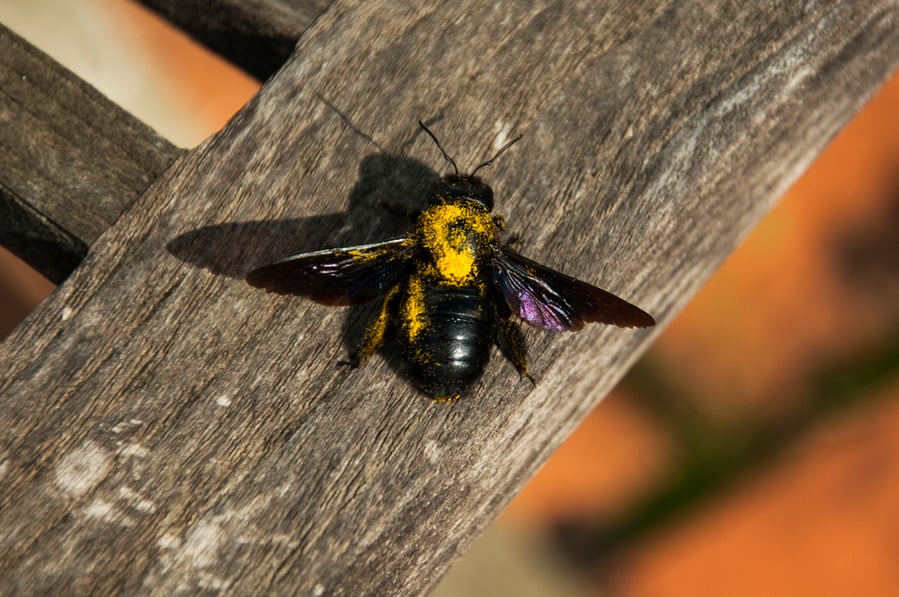
Some flowers listed below, like red geraniums and dahlias, use their color to ward off bees.
If you want to find a natural way to keep carpenter bees away, have a look at these top 19 flowers:
Opt for Night-Blooming Flowers

Besides reflecting the moonlight and adding color, night-blooming flowers are far more scenic and fragrant than their day-blooming counterparts.
Carpenter bees are dormant at night and active during the day, preferring to rise with the sun and begin hunting for pollen and nectar early in the morning.
Plant at least a few night-blooming flowers to enjoy a garden free of carpenter bees.
1. Moonflower
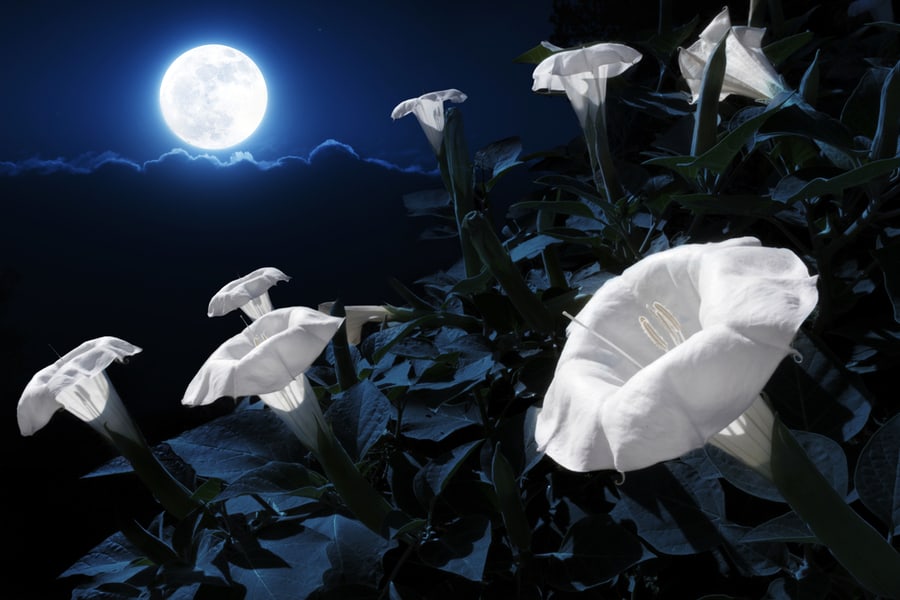
Large white or pink blooms on moonflowers open up swiftly in the evening and remain open until just after sunrise.
They occasionally remain open later in the afternoon on cloudy days, although they often close in the morning once sunlight reaches them.
This fast-growing perennial, evergreen vine prefers wet soil and full sun but will also grow in partial sunlight.
2. Night-Scented Orchid
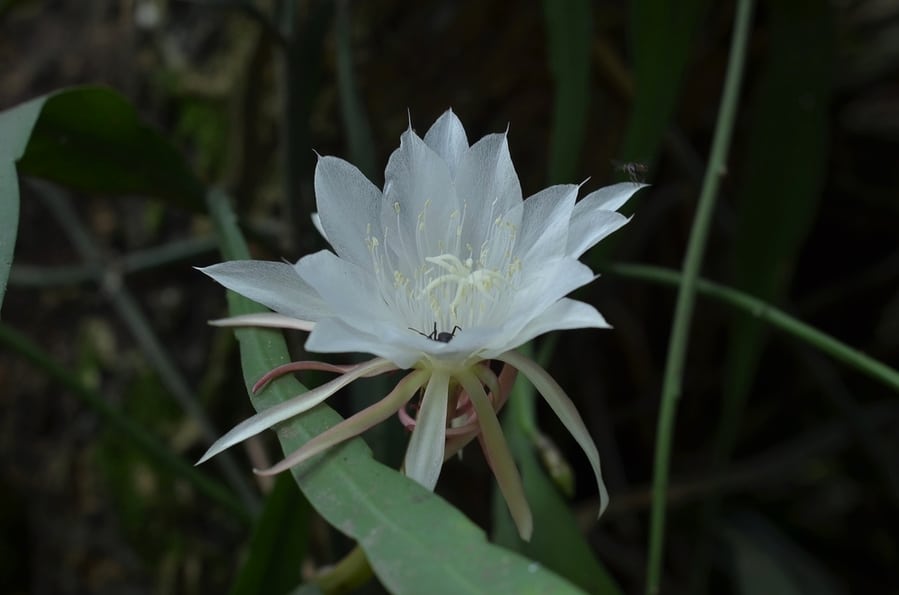
If you are persistent about watering and maintenance, you may grow these flowers anyplace. At dusk, take pleasure in the aroma these blooms exude.
These orchids need no pollinators to reproduce, so their white and yellow blooms occasionally open, making them an excellent choice for deterring carpenter bees.
3. Nicotiana
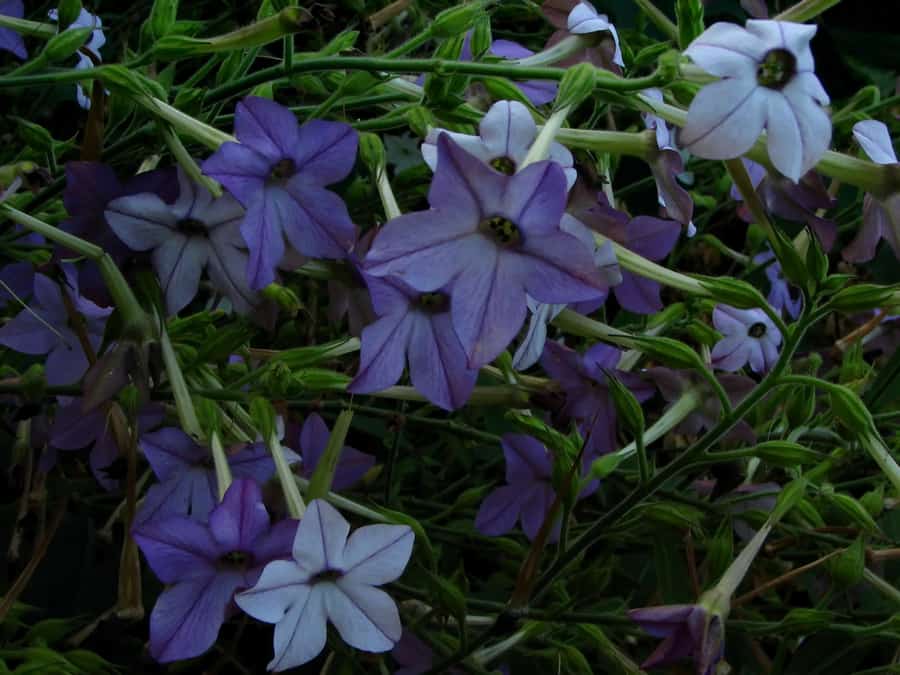
Plant nicotiana flowers next to your patio, and enjoy a carpenter-bee-free environment and a delightful aroma.
These flowers bloom in the late afternoon or early evening, and the fastest way to add them to your flowerbed is to transplant them from nursery plants.
They also sprout quickly, so you may try starting it from a seed.
4. Evening Stock

You may also know the evening stock as night-scented stock. It is a resilient annual that you can grow in almost any place.
The petals of the white and purple flowers spread out and spring to life at night, but they can appear wilted during the day.
The evening stock is also at its most aromatic during this time, so if you frequently have gatherings in the evening, it is ideal to grow it next to your outdoor living spaces.
5. Night-Blooming Cereus

You may also refer to these lovely night-blooming succulents as orchid cacti.
Even though they feature huge, cup-shaped, highly scented blooms, they do not draw carpenter bees and instead attract moths.
They blossom one night a year, after which they wilt.
Consider Flowers With Trumpet-Shaped Blooms
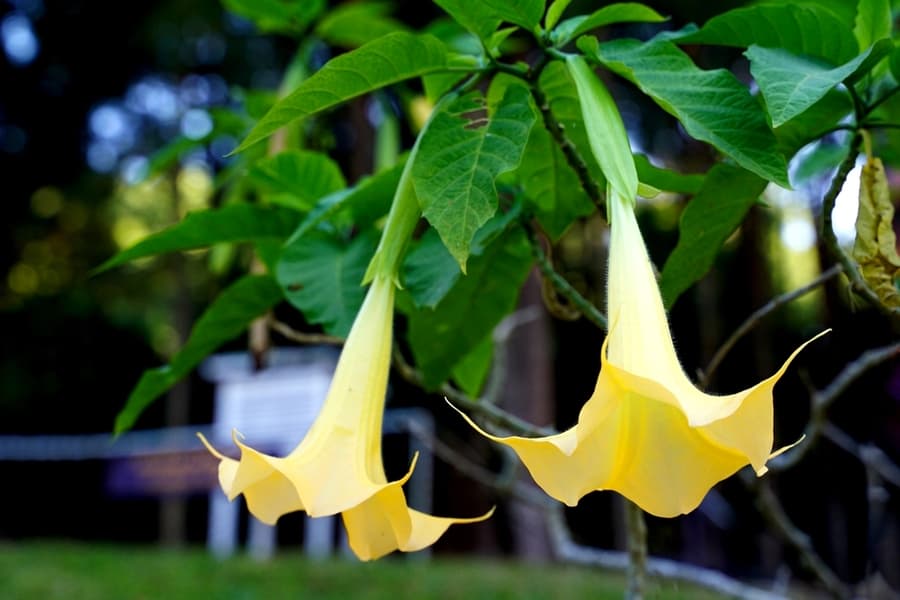
Flowers with trumpet-shaped blossoms store nectar deep in their tunnels.
Therefore, these flowers hold less appeal to carpenter bees because they find it difficult to access the nectar.
6. Amaryllis
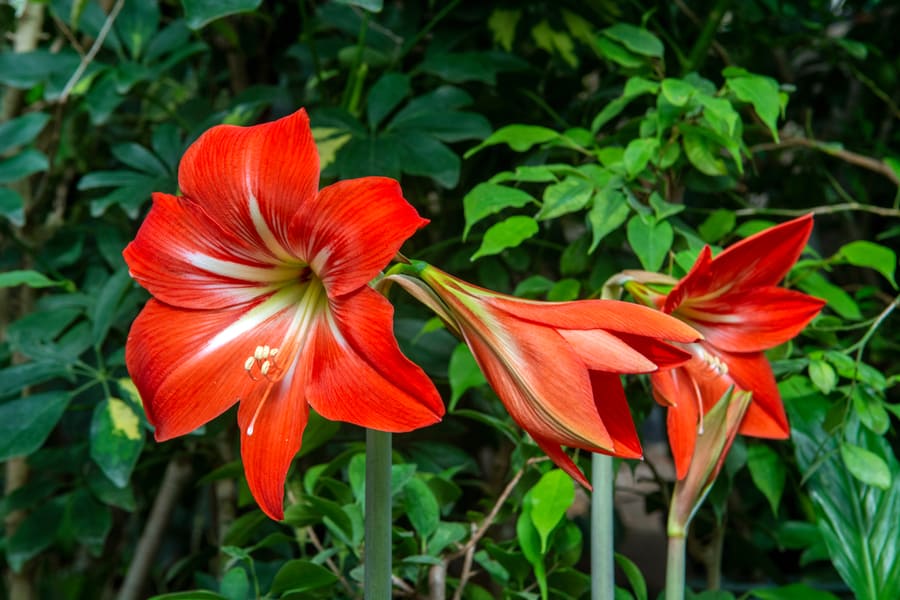
These stunning flowers keep bees away with their distinctive long tubular bloom appearance, challenging carpenter bees to reach inside for the nectar.
7. Tulips

Tulips are beautiful and among the most popular and cultivated flowers.
Despite their beauty, carpenter bees do not particularly enjoy them.
Although their color might be a deterring factor, the closed structure of the flower heads also adds to bees’ disinterest.
8. Devil’s Trumpet (Datura)
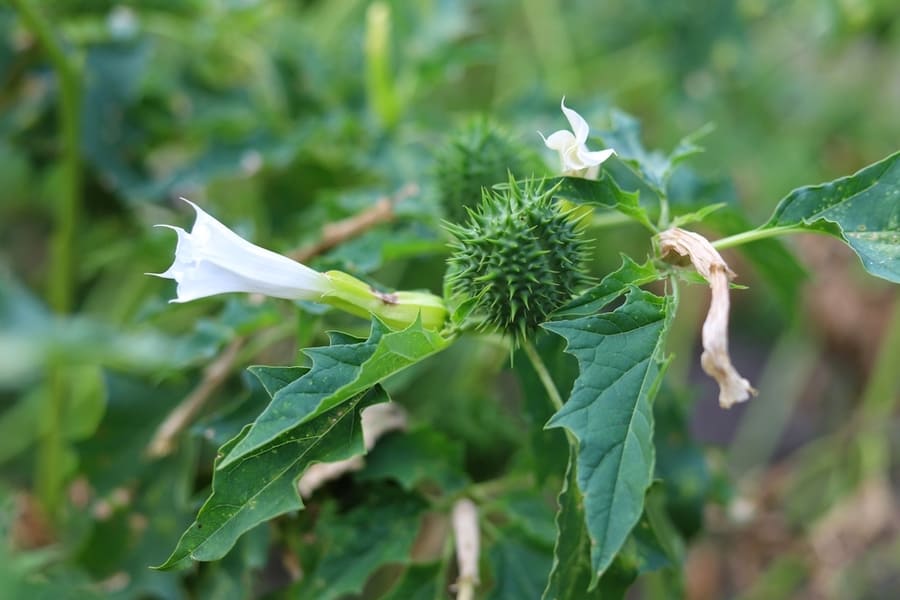
Datura flowers bloom at night, and moths are the main pollinators.
Their trumpet-shape blooms deter carpenter bees because they find it hard to draw in nectar.
9. Beard Tongues (Penstemon)

Penstemon flowers are large and bell-shaped, a feature that denies carpenter bees access.
Also, carpenter bees stay off because of their red color.
10. Foxglove
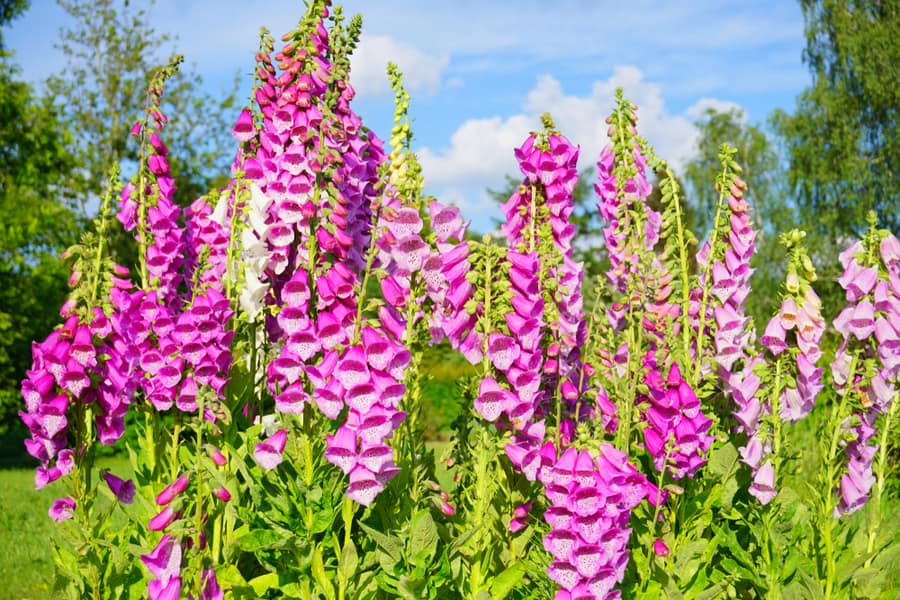
Even though foxglove has a lot of nectar, it is only large thick beaks like a hummingbird that can get to the bell-shaped flower.
Carpenter bees will avoid the blossom in quest of a quicker meal.
Plant Flowers That Have Subtle Blossoms
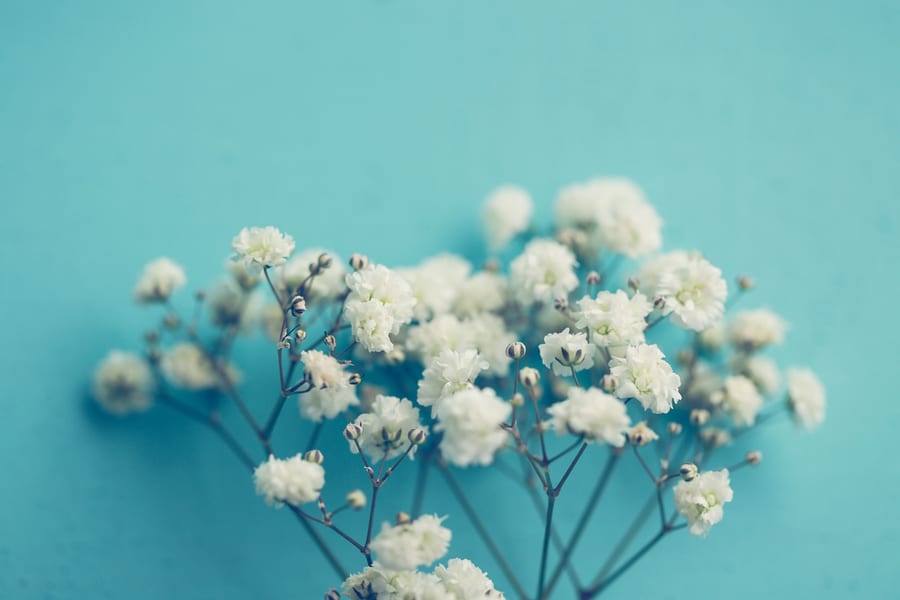
Carpenter bees dislike small-blooming flowers and prefer larger blossoms where they can forage more efficiently.
11. Pussy Toes (Antennaria dioica)
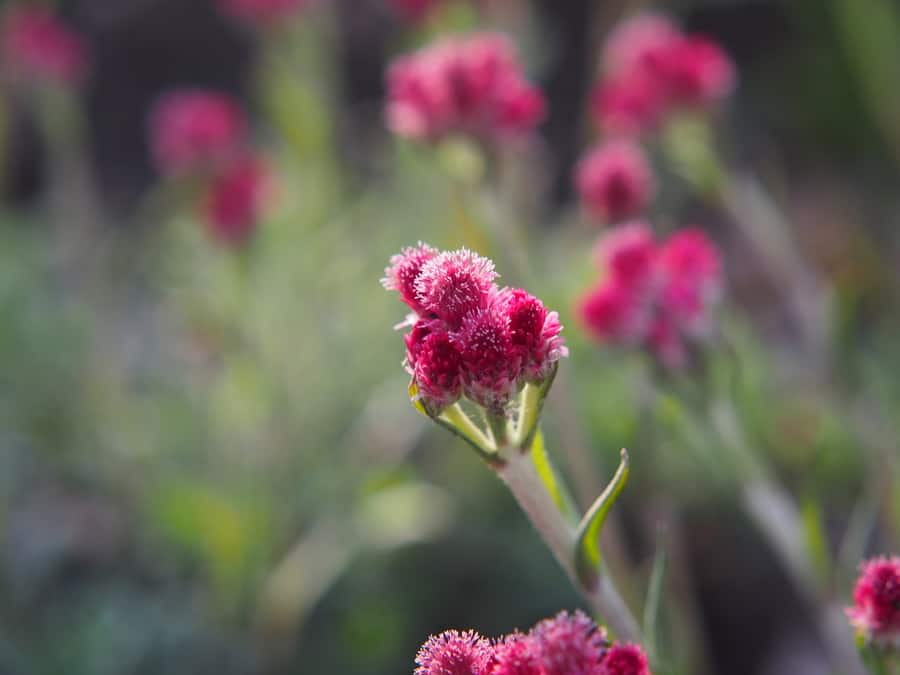
This perennial herb is a characteristic of highland grasslands.
Their tiny, discrete flower clusters that resemble the toes of a cat’s paw deter carpenter bees.
Consider Non-Flowering Plants
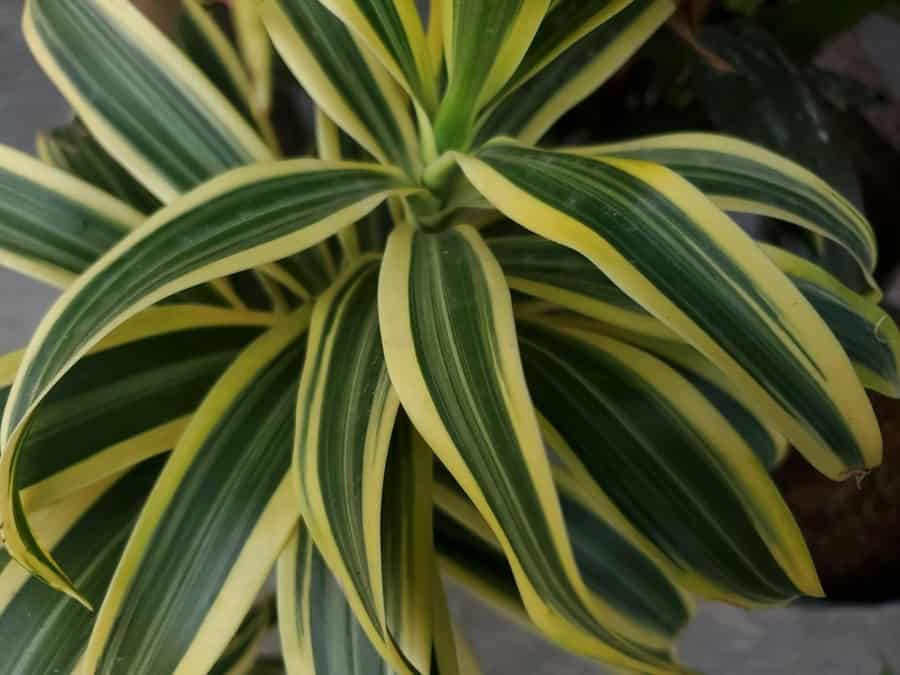
Carpenter bees lack interest in self-pollinated and wind-pollinated flowers.
These flowers do not produce blossoms and thus lack nectar and pollen, two of the primary ingredients of a carpenter bee’s diet.
12. Mosses
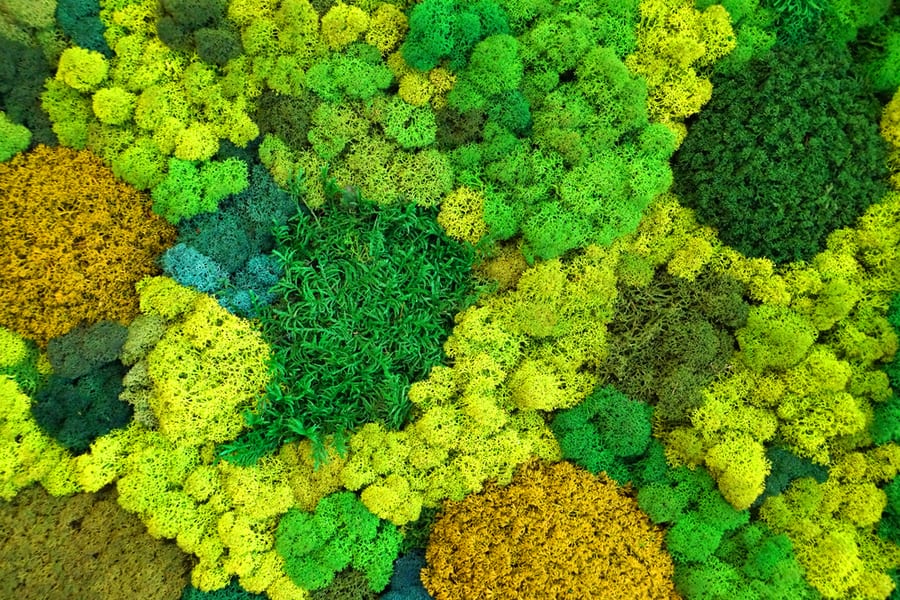
Mosses serve as a lovely, rich ground cover and do not attract insects because they do not need pollination to reproduce.
13. Ferns
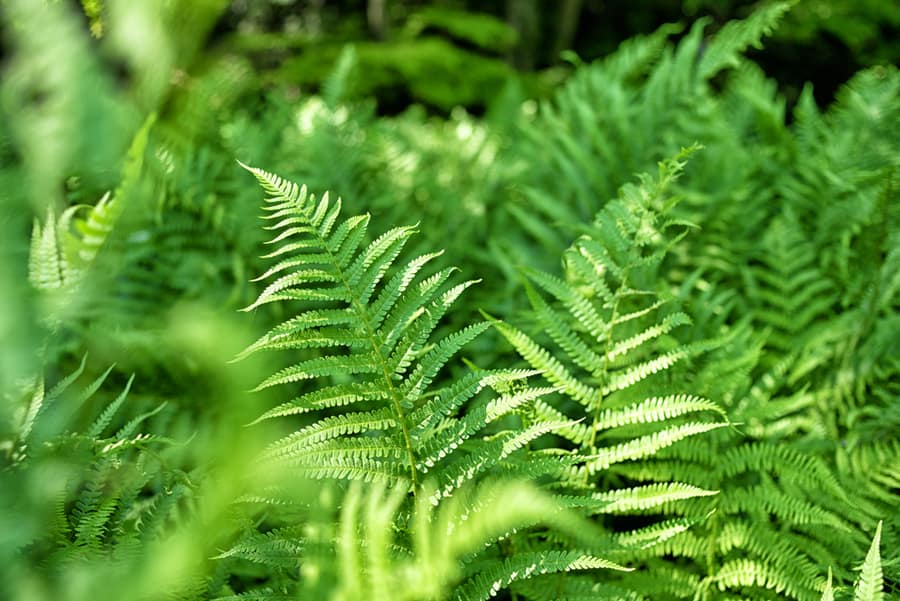
Ferns are a stunning garden addition, and some species are edible.
They also don’t need insect pollinators because they reproduce using spores.
Thus, they don’t draw carpenter bees.
14. Evergreen Shrubs
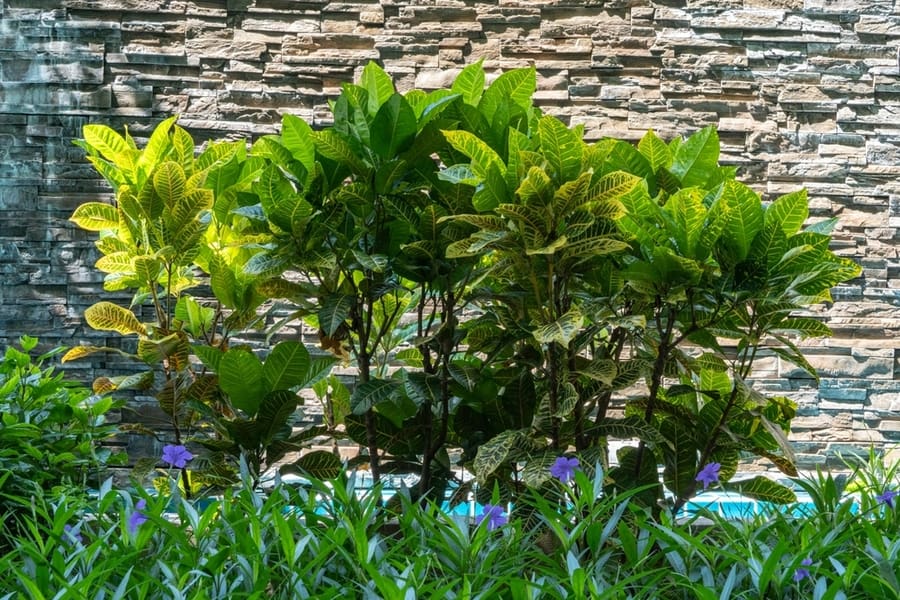
Many evergreen shrubs are attractive and non-flowering, and their aroma keeps pesky insects away.
Plant Flowers That Are Repulsive
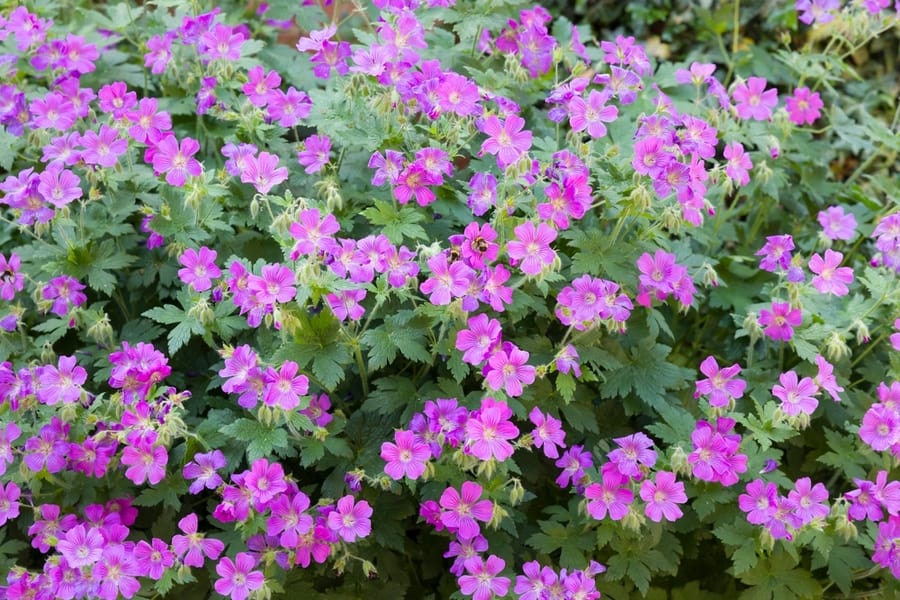
Carpenter bees are suckers of flowers with enticing aromas.
Therefore, choose blooms with a milder aroma if you wish to keep them at bay.
15. Feverfew

These are lovely daisy-like flowers with traditional white petals and a yellow stigma.
Bees avoid these blooms because of the distinct fragrance that they emit.
To deter carpenter bees, grow this specimen in hanging pots on balconies, patios, and other outdoor spaces.
16. Geraniums
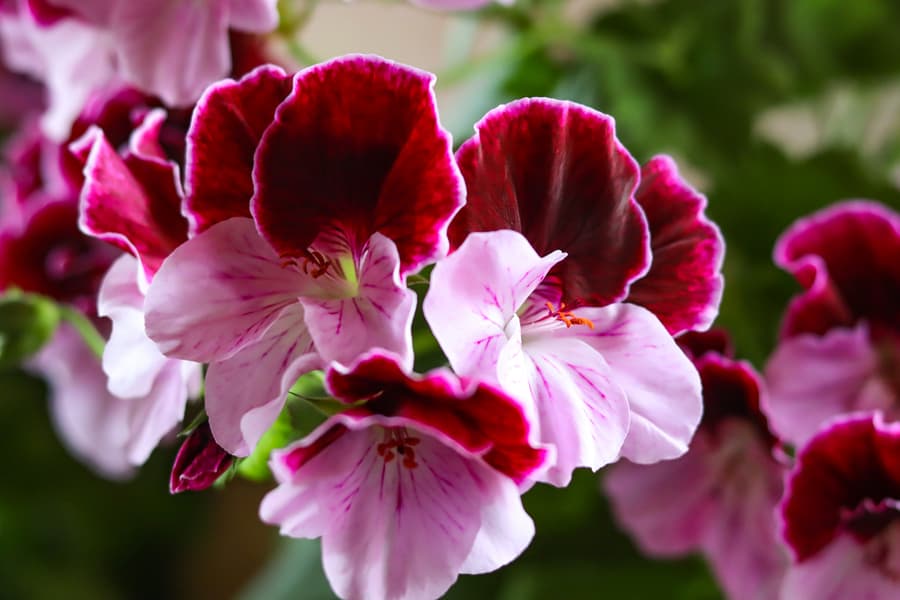
Planting red geraniums will undoubtedly reduce carpenter bees in your garden.
Carpenter bees have trouble detecting the red variant because of its hue.
These flowers are among the finest for repelling carpenter bees since they produce little to no pollen and have an unpleasant aroma.
17. Marigold
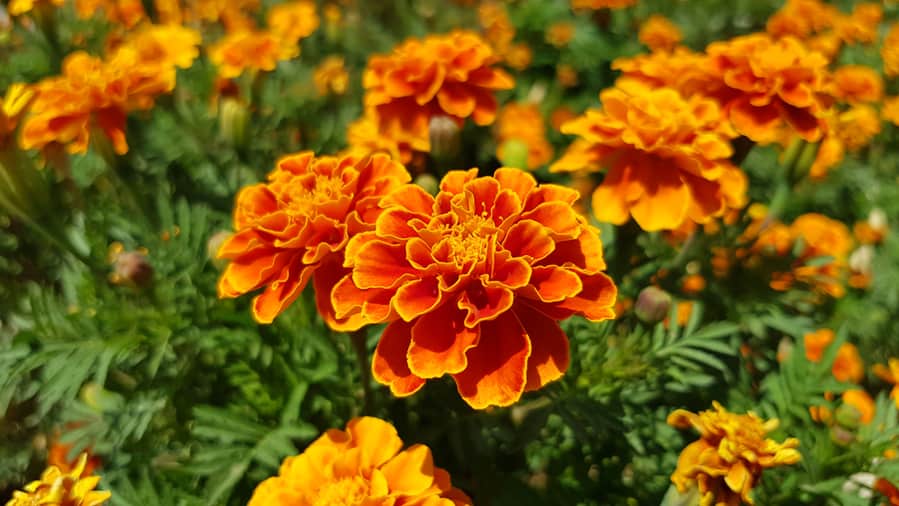
Marigold is yet another heavily scented carpenter bee repellent.
Most marigolds have double flowers that yield little pollen, making it harder for carpenter bees to hover around them.
18. Red Dahlias
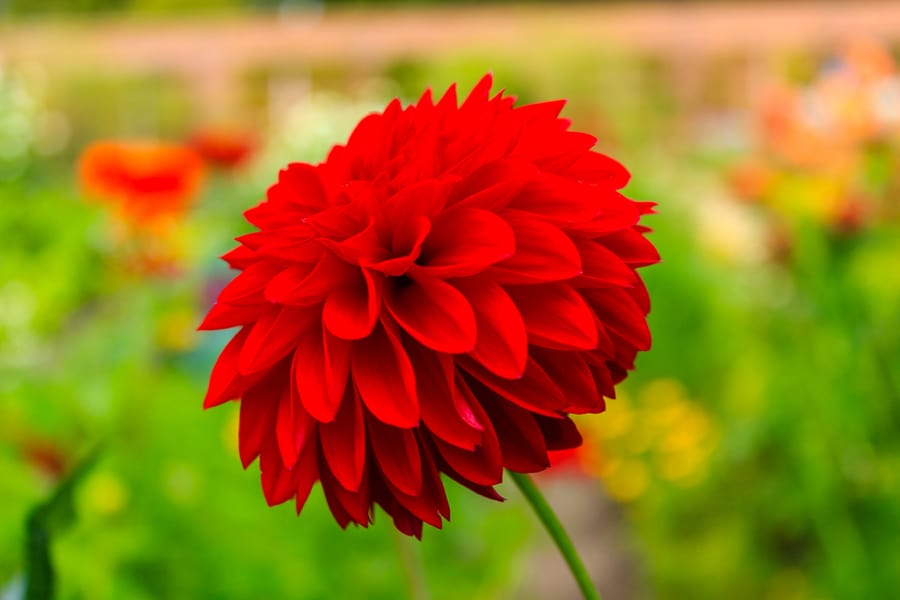
Dahlias are also top on the list of flowers for your summer garden.
These mouthwatering red blooms scream sunlight and warmth.
This shade of red also triggers carpenter bees, who will avoid these flowers for better pickings.
19. Ranunculus

You may also know these cool season flowers that range in color from gentle pink and mild yellow to vivid orange and burgundy as buttercups.
These colorful bloomers are excellent for planting in the yard or in pots. They offer color to spring bouquets and vase centerpieces, which you can use as cut flowers.
Red Ranunculus, which you can easily mistake for roses, combines a strong and aggressive appearance of a rose with the tiny, sleek profile of poppies.
Bees search for better possibilities because of the tight structure and strong perfume of these bright-red flowers.
Conclusion
A carpenter bee population is waning, so it is best to keep flowers that repel them out of areas where they cause havoc.
If you are looking to add some color to your garden through flowers without the threat of carpenter bees, plant non-flowering plants. With no nectar to consume, carpenter bees will starve and are unlikely to hang around.
Also, pay attention to the bloom shape, the time of blooming, and the size of the blooms to set up the best version of your carpenter-bee-free garden.
Frequently Asked Questions
How Long Do Carpenter Bees Remain in an Area?
Carpenter bees remain on wooden structures in homes from early spring through summer.
What Draws Carpenter Bees?
Apart from having lots of flowers that lure carpenter bees into your yard, here are other things that attract them to your property:
- Uncovered plank ends: Carpenter bees enjoy drilling into wood, beginning from one end and following the grain. Seal any uncovered ends with aluminum flashing.
- Untreated wood: Carpenter bees will first select untreated wood when searching for a place to build their nest tunnels. They love piles of firewood, fences, decks, sheds, and other unpainted wood matter.
- Old bee nests: Carpenter bees use previous nests built by other carpenter bees to develop tunnels. They are destructive, and if you leave old tunnels unsealed, your home will continue to draw these insects.

